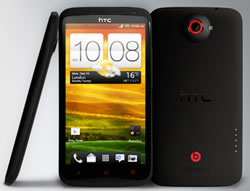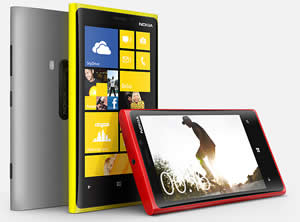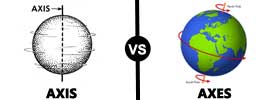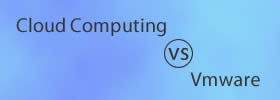Difference between HTC One X+ and Nokia Lumia 920
Key Difference: The HTC One X+ sports a 4.7-inch super LCD 2 touch screen with approximately 312 ppi pixel density, meaning the screen is pretty awesome and it does not show any pixels. The device is powered by 1.7 GHz Quad-core NVIDIA Tegra 3 process making it faster than the original HTC One X. One of the first smartphones under the brand is the Nokia Lumia 920. The Nokia Lumia 920 was one of the first phones to be developed running on Windows Phone 8. It was launched in November 2012 as its flagship phone.

HTC is a popular smartphone company and has been touted for many beautifully designed phones. The phones are smart, sleek and to the point with no extra marketing gimmick. HTC maintains this with the launch of the HTC One X+. The HTC One X+ is a new phone that shares many similarities to its big brother the HTC One X; however, it also shines in many places where the predecessor shied. The HTC One X+ is basically an upgraded version of the HTC One X and hit the market in November 2012.
The HTC One X+ sports a 4.7-inch super LCD 2 touch screen with approximately 312 ppi pixel density, meaning the screen is pretty awesome and it does not show any pixels. The screen has excellent resolution and shows sharp and crisp clear photos and videos. The screen is protected by Corning Gorilla Glass 2 that keeps it from getting minor day-to-day scratches. The device is sleek and thin in general, but has put on a little extra weight (5 grams) compared to the original One X. The phone is covered in a soft-touch polycarbonate plastic chassis that has smooth curved corners. The soft matte plastic makes it easy to grip the phone and keeps it from slipping through the fingers. The phone comes incorporated with the HTC Sense UI v4+, which is basically a combination of the HTC Sense and Jelly Bean. The combination of the two provides additional features such as: Google Now, Voice search, faster screen navigation, new gallery app (organizes photos by events and location) and HTC Get Started (allows PC to configure the phone faster).
The device is powered by 1.7 GHz Quad-core NVIDIA Tegra 3 process making it faster than the original HTC One X. The faster processor allows seamless transitions between apps and makes the device smooth to work with. There was no hindering or jerking when operating the device. The One X+ comes installed with Android v4.1 (Jelly Bean) right out of the box. The device comes with 32 and 64 GB internal storage capacity that is not expandable and 1 GB RAM.
The device houses an 8 MP rear camera with auto focus, LED flash, and BSI sensor, along with a 1.6 MP front camera for video conferencing. The front camera also has a countdown features that counts down to the moment the picture is being taken to ensure that the user is camera ready. The camera comes with many additional features that help the phone stand out against all the other devices. The features include: F2.0 aperture and 28mm lens, Dedicated HTC ImageChip, VideoPic, Continuous shooting, Smart Flash, Sightseeing mode, Video stabilization, Slow motion video capture and playback and ImageSense. The ImageSense allows the phone to take faster and the best photos under any lighting. The VideoPic is a new feature that allows users to take images while recording a video as well as taking an image when playing an already recorded video. The Smart Flash provides five levels of flash that adjust automatically when trying to take a shot, while the Sightseeing mode allows the camera to be handy during outings, so that it can be easily accessible.
The device houses a non-removable 2100 mAh Lithium-ion Polymer battery, which according to tests by many review website, dies pretty quickly. When fully-working the battery does not even last a whole day. However, no official data has been released by the company regarding the Talk-time and the Stand-by time. The company has also added the Beats Audio sound enhancement to its speakers as well as headset and it can be turned on and off by the user. The phone has been a popular hit with many that require a good sturdy budgeted phone with an excellent camera.

Nokia is a Finland-based multinational communications and information technology corporation. Nokia’s phones have been famously known as being simple and durable. In 2012, it was the world’s second largest mobile phone maker by unit sales, following Samsung. However, the sales of Nokia have been decreasing as more and more of the market shifts towards smartphones such as iPhones and Androids. In an attempt to offset their decreasing sales, Nokia tied up with Microsoft to release its own line of smartphones, the Nokia Lumia running on Windows Phone Operating Software.
One of the first smartphones under the brand is the Nokia Lumia 920. The Nokia Lumia 920 was one of the first phones to be developed running on Windows Phone 8. It was launched in November 2012 as its flagship phone. At the same time, Nokia launched Nokia Lumia 820, as a slightly cheaper alternative to the Nokia Lumia 920.
Nokia Lumia 920 has a 4.5 inch display with a resolution of 768 x 1280 pixels. It is powered by a Qualcomm MSM8960 Snapdragon Dual-core 1.5 GHz Krait and a 1 GB RAM. The phone has 8 GB internal memory and an external memory expandable up to 64 GB. It features an 8 MP primary camera with a resolution of 3264 x 2448 pixels. It also has a 1.3 MP front-facing secondary camera.
The phone is available in a variety of bright colors, such as black, gray, red, yellow, and white. The newest and most distinguishing feature of the Lumia 920 is that the phone is capable of wireless charging. However, the wireless charging mat is not included with the phone and has to be purchased separately.
The device has been criticized as being heavy and bulky. Another issue with the phone, in fact all the Windows phones, is that it comes with the Internet Explorer browser built-in, which can be quite lagging at times, and the phones do not support any other browsers. Furthermore, the collection of apps available on Windows is quite limited, especially as compared to the apps available for Android and Apple.
The information for the detailed table about the two phones has been taken from HTC website, Nokia website, digitaltrends.com and GSMArena.com.
|
|
HTC One X+ |
Nokia Lumia 920 |
|
Launch Date |
November 2012 |
November 2012 |
|
Company |
HTC |
Nokia |
|
Size |
134.36 x 69.9 x 8.9mm |
130.3 x 70.8 x 10.7 mm, 99 cc (5.13 x 2.79 x 0.42 in) |
|
Display |
4.7 inch super LCD 2 touch screen |
4.5 inches IPS LCD capacitive touchscreen, 16M colors |
|
Screen |
720 x 1280 pixels (~312 ppi pixel density) |
768 x 1280 pixels (~332 ppi pixel density) |
|
Protection |
Corning Gorilla Glass 2 |
Corning Gorilla Glass 2 - PureMotion HD+ ClearBlack display |
|
Weight |
135 grams |
185 g (6.53 oz) |
|
2G Network |
GSM 850 / 900 / 1800 / 1900 |
GSM 850 / 900 / 1800 / 1900 - RM-821, RM-820 |
|
3G Network |
HSDPA 850 / 900 / 1900 / 2100 HSDPA 850 / 1900 / 2100 - for AT&T |
HSDPA 850 / 900 / 1900 / 2100 - RM-821, RM-820 |
|
4G Network |
LTE 700 MHz Class 17 / 1700 / 2100 - for AT&T |
LTE 800 / 900 / 1800 / 2100 / 2600 - RM-821 |
|
GUI |
HTC Sense UI v4+ |
Windows Phone 8 |
|
CPU speed |
1.7 GHz Quad-core NVIDIA® Tegra® 3 |
Dual-core 1.5 GHz Krait |
|
GPU |
ULP GeForce 2 |
Adreno 225 |
|
OS |
Android OS, v4.1.1 (Jelly Bean) |
Microsoft Windows Phone 8 |
|
Chipset |
NVIDIA Tegra 3 AP37 |
Qualcomm MSM8960 Snapdragon |
|
RAM |
1 GB |
1 GB RAM |
|
SIM Size |
microSIM |
Micro-SIM |
|
Internal Memory |
32/64 GB |
32 GB |
|
Expandable Memory |
No |
No |
|
Sensors |
Gyro sensor, G-Sensor, Digital compass, Proximity sensor, Ambient light sensor |
Accelerometer, gyro, proximity, compass |
|
Connectivity |
3.5 mm stereo audio jack, NFC capable, Compliant with Bluetooth 4.0, Bluetooth with aptX™ enabled, Wi-Fi®: IEEE 802.11 a/b/g/n, DLNA®, micro-USB 2.0 (5-pin) port with mobile high-definition video link (MHL) for USB or HDMI connection |
Micro-USB charging connector, 3.5 mm audio connector, Micro-USB-B connector, USB 2.0, Bluetooth 3.0, Wi-Fi, NFC, Wi-Fi Channel bonding |
|
Data |
GPRS, EDGE, WLAN, Bluetooth, NFC, USB. |
GPRS, EDGE, WLAN, Bluetooth, USB, NFC |
|
Speed |
HSDPA, 21 Mbps; HSUPA, 5.76 Mbps - Global version / HSDPA, 42 Mbps; HSUPA, 5.76 Mbps; LTE |
HSDPA, 42.2 Mbps; HSUPA, 5.76 Mbps; LTE, Cat3, 50 Mbps UL, 100 Mbps DL |
|
WLAN |
Wi-Fi 802.11 a/b/g/n, dual-band, DLNA, Wi-Fi hotspot |
Wi-Fi 802.11 a/b/g/n, dual-band, DLNA, Wi-Fi hotspot |
|
Bluetooth |
Bluetooth v4.0 with A2DP |
Yes, v3.1 with A2DP, EDR |
|
USB |
microUSB v2.0 (MHL) |
microUSB v2.0 |
|
Primary Camera |
8 MP camera with auto focus, LED flash, and BSI sensor |
8 MP, 3264 x 2448 pixels |
|
Secondary Camera |
1.6 megapixel front camera (720p for video recording) |
Yes, 1.3 MP, 720p@30fps |
|
Video |
1080p HD video recording |
Yes, 1080p@30fps, video stabilization |
|
Camera Features |
|
|
|
Sound Enhancement |
Beats Audio |
Mono with high dynamics, Active noise cancellation with dedicated mic |
|
Audio supported formats |
.aac, .amr, .ogg, .m4a, .mid, .mp3, .wav, .wma |
Codecs: MP3, AMR-WB, AMR-NB, WMA 10 Pro, WMA 9, AAC LC, AAC+/HEAAC, eAAC+/HEAACv2 Audio playback file formats: ASF, MP4, AAC, AMR, MP3, M4A, WMA, 3GP, 3G2 |
|
Video supported formats |
.3gp, .3g2, .mp4, .wmv (Windows Media Video 9), .avi (MP4 ASP and MP3) |
Video playback codecs: VC-1, H.264/AVC, H.263, MPEG-4 Video playback file formats: MP4, WMV, 3GP, M4V Video recording formats: MP4/H.264 |
|
Battery Capacity |
Non-removable 2100 mAh Li-ion Polymer battery |
Non-removable Li-Ion 2000 mAh battery (BP-4GW) |
|
Talktime |
No official data released |
3G: 460 hours |
|
Standby Time |
No official data released |
2G: 18.6 hours 3G: 10.8 hours
|
|
Available Colors |
Black, White |
Black, Gray, Red, Yellow, White |
|
Messaging |
SMS(threaded view), MMS, Email, Push Mail, IM, RSS |
SMS (threaded view), MMS, Email, Push Email, IM |
|
Browser |
HTML5, Adobe Flash |
HTML5 |
|
Radio |
Stereo FM radio with RDS |
No |
|
GPS |
GPS with A-GPS support and GLONASS |
Yes, with A-GPS support and GLONASS |
|
Java |
Java with Java MIDP emulator |
No |
|
Additional Features |
|
|
Image Courtesy: htc.com, nokia.com









Add new comment